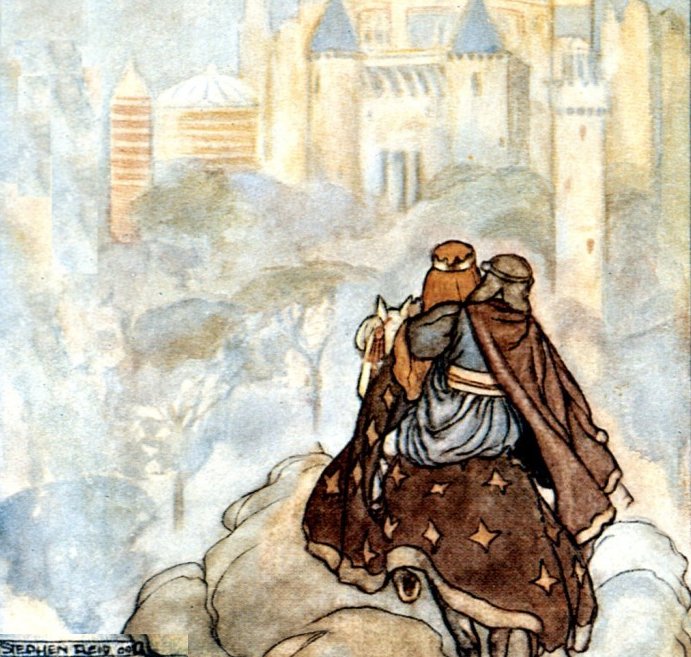Mag Mell: Irish Tradition Of Otherworldly Paradise That Could Be Reached Through Death And Glory
A. Sutherland - AncientPages.com - In the mythology of the Irish people, Mag Mell was a mythical, paradise-like realm with everlasting spring and sunshine. It was a place where all the trees were always full of magical fruit, flowers, and divine mead that could never be emptied.
The fairy Otherworld; a beautiful land of everlasting spring and sunshine, the Land of Youth (Tir na n-Og) or Mag Mell. Illustration by Stephen Reid in T. W. Rolleston's The High Deeds of Finn (1910) via Wikipedia
In Mag Mell lived gods accompanied by immortal heroes who were able to reach this place through death and glory.
All of them enjoyed endless happiness and harmony. Neither disease nor death or any other discomforts was known to them.
Mag Mell reminds us of god Odin’s Valhalla, the hall of the fallen Viking Warriors. Valhalla was the Viking warriors’ dream destination and Mag Mell was reserved for the Celtic heroes who died honorably.
In several Irish tales, Mag Mell was the Otherworld in the form of a floating island and the realm of the sea god Manannan Mac Lir. According to the Irish “Book of Invasions”, a sea god and king of the Fomorians, Tethra became a ruler of Mag Mell, after his death in the first battle of Mag Tuired, when the Tuatha De Danann took Ireland from the Fir Bolg, one of the four groups, who then inhabited the island.
Tradition has it that this ancient sea god never lived on land but made his home somewhere in the ocean, on an island with different names: Mag Mell (“plain of honey” or “the plain of delights”) or sometimes Emain Ablach (“island of apples”) and Tir Tairngiri (“land of promise”).
The ancient Irish imagined Mag Mell to be located in the south or south-west of Ireland or beneath the ocean. It was also considered a possible refuge for the Tuatha De Danann.
Mag Mell Is Unlike The Underworld In Other Mythologies
Mag Mell was accessible only to those who really deserved it. It was not a place similar to other realms of the dead like Hel’s dark dwelling place for the dead in Norse myths or a gloomy abode of Yama, the god of the underworld, who rules the hell and judges the dead, in Hindu texts.
This supernatural Celtic realm of everlasting youth, beauty, health, abundance, and joy, was never associated with a typical afterlife destination.
Mag Mell was believed to be an earthly paradise, accessible to divine beings and some earthly visitors, who became the chosen ones such as Cuchulainn or Tethra, Fionn mac Cumhaill, and others.
According to ancient Irish beliefs, time passes much slower in the Otherworld. As previously discussed on Ancient Pages, the Celtic Tree of Life served as a portal to invisible worlds and a source of sacred knowledge, guarded by the most enlightened ones.
This could explain why ancient Celts believed there were gateways leading from the material into the spiritual world, and why times passed slower in this mysterious realm, invisible to the naked eye. The nature and reality of the Celtic Otherworld sound almost like the modern concept of parallel universes.
Updated on February 21, 2024
Written by – A. Sutherland - AncientPages.com Senior Staff Writer
Copyright © AncientPages.com All rights reserved. This material may not be published, broadcast, rewritten or redistributed in whole or part without the express written permission of AncientPages.com
Expand for referencesMore From Ancient Pages
-
 Winged Hussars: Facts And History About The Polish Warriors, Their Armor And Military Tactics
Featured Stories | Feb 14, 2016
Winged Hussars: Facts And History About The Polish Warriors, Their Armor And Military Tactics
Featured Stories | Feb 14, 2016 -
 Beehive’ Adobe Houses Of Ancient City Of Harran, Upper Mesopotamia
Civilizations | Dec 28, 2018
Beehive’ Adobe Houses Of Ancient City Of Harran, Upper Mesopotamia
Civilizations | Dec 28, 2018 -
 Ancient Humans: Clarifying The Co-Existence Between Modern Humans And Neanderthals
Archaeology | Oct 13, 2022
Ancient Humans: Clarifying The Co-Existence Between Modern Humans And Neanderthals
Archaeology | Oct 13, 2022 -
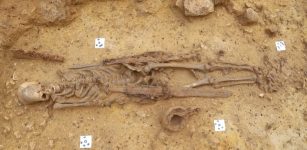 Untouched 1,300-Year-Old Grave Of Merovingian Warrior With Complete Armor Found In Ingelheim, Germany
Archaeology | Sep 19, 2023
Untouched 1,300-Year-Old Grave Of Merovingian Warrior With Complete Armor Found In Ingelheim, Germany
Archaeology | Sep 19, 2023 -
 Mysterious Ancient Egyptian Royal Tomb Sheds Light On Little-Known Abydos Dynasty
Archaeology | Mar 17, 2025
Mysterious Ancient Egyptian Royal Tomb Sheds Light On Little-Known Abydos Dynasty
Archaeology | Mar 17, 2025 -
 On This Day In History: Battle Of Pinkie Was Fought – On September 10, 1547
News | Sep 10, 2016
On This Day In History: Battle Of Pinkie Was Fought – On September 10, 1547
News | Sep 10, 2016 -
 Callacpuma’s Megalithic Stone Circular Plaza Was Constructed Using A Technique Previously Unseen In The Andes
Archaeology | Feb 15, 2024
Callacpuma’s Megalithic Stone Circular Plaza Was Constructed Using A Technique Previously Unseen In The Andes
Archaeology | Feb 15, 2024 -
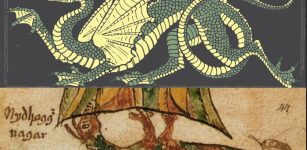 Nidhogg – Dreadful Winged Corpse-Eating Dragon Who Is Enemy Of Asgard And Yggdrasil Tree
Featured Stories | May 9, 2020
Nidhogg – Dreadful Winged Corpse-Eating Dragon Who Is Enemy Of Asgard And Yggdrasil Tree
Featured Stories | May 9, 2020 -
 Greco-Roman Bath Complex, Coin Depicting King Ptolemy III And Other Artifacts Found In Egypt’s Gharbia Province
Archaeology | May 26, 2018
Greco-Roman Bath Complex, Coin Depicting King Ptolemy III And Other Artifacts Found In Egypt’s Gharbia Province
Archaeology | May 26, 2018 -
 Curious Bannerstones Used By Prehistoric Native Americans For Unknown Purpose
Artifacts | May 31, 2021
Curious Bannerstones Used By Prehistoric Native Americans For Unknown Purpose
Artifacts | May 31, 2021 -
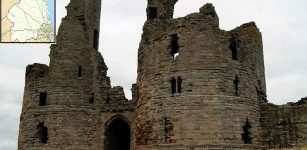 Dunstanburgh Castle: Underground Passageways And The Legend Of Sir Guy The Seeker
Featured Stories | Apr 5, 2016
Dunstanburgh Castle: Underground Passageways And The Legend Of Sir Guy The Seeker
Featured Stories | Apr 5, 2016 -
 Ruins Of 2,300-Year-Old City Of Jiaohe On The Silk Road
Civilizations | Aug 6, 2023
Ruins Of 2,300-Year-Old City Of Jiaohe On The Silk Road
Civilizations | Aug 6, 2023 -
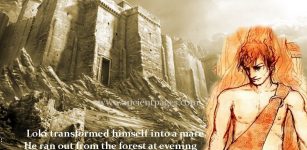 Asgard Walls Built By Giant Master Mason And Birth Of Magical Horse Sleipnir
Featured Stories | Apr 19, 2018
Asgard Walls Built By Giant Master Mason And Birth Of Magical Horse Sleipnir
Featured Stories | Apr 19, 2018 -
 Cuchulainn: Irish Mythical Hero And His Cruel Magical Spear Gae Bolg
Celtic Mythology | Jun 6, 2017
Cuchulainn: Irish Mythical Hero And His Cruel Magical Spear Gae Bolg
Celtic Mythology | Jun 6, 2017 -
 Stikini ‘Man-Owl’ – Sinister Vampiric Monster That Works In Disguise
Featured Stories | Jan 29, 2019
Stikini ‘Man-Owl’ – Sinister Vampiric Monster That Works In Disguise
Featured Stories | Jan 29, 2019 -
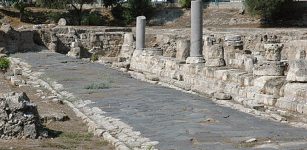 Biblical City Of Tarsus: Excavations Reveal Its Secrets From Paul the Apostle’s Times
Archaeology | Jan 4, 2016
Biblical City Of Tarsus: Excavations Reveal Its Secrets From Paul the Apostle’s Times
Archaeology | Jan 4, 2016 -
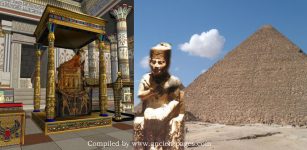 Why Should There Be An Iron Throne Inside The Cheops’ Pyramid?
Archaeology | Apr 16, 2018
Why Should There Be An Iron Throne Inside The Cheops’ Pyramid?
Archaeology | Apr 16, 2018 -
 Unique Find In A French Crypt Offers The First Evidence Of European Familial Embalming Dating Back To The 16th Century
Archaeology | Nov 20, 2024
Unique Find In A French Crypt Offers The First Evidence Of European Familial Embalming Dating Back To The 16th Century
Archaeology | Nov 20, 2024 -
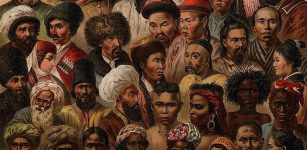 Ancient Trans-Atlantic Emigration Theory – Not Supported By Genetic Data, Researcher Says
Archaeology | Jan 18, 2016
Ancient Trans-Atlantic Emigration Theory – Not Supported By Genetic Data, Researcher Says
Archaeology | Jan 18, 2016 -
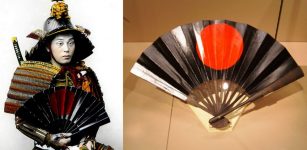 Innocent-Looking Japanese War Fan – Surprise Weapon Used By The Samurai And Female Ninja
Ancient History Facts | Mar 29, 2018
Innocent-Looking Japanese War Fan – Surprise Weapon Used By The Samurai And Female Ninja
Ancient History Facts | Mar 29, 2018

